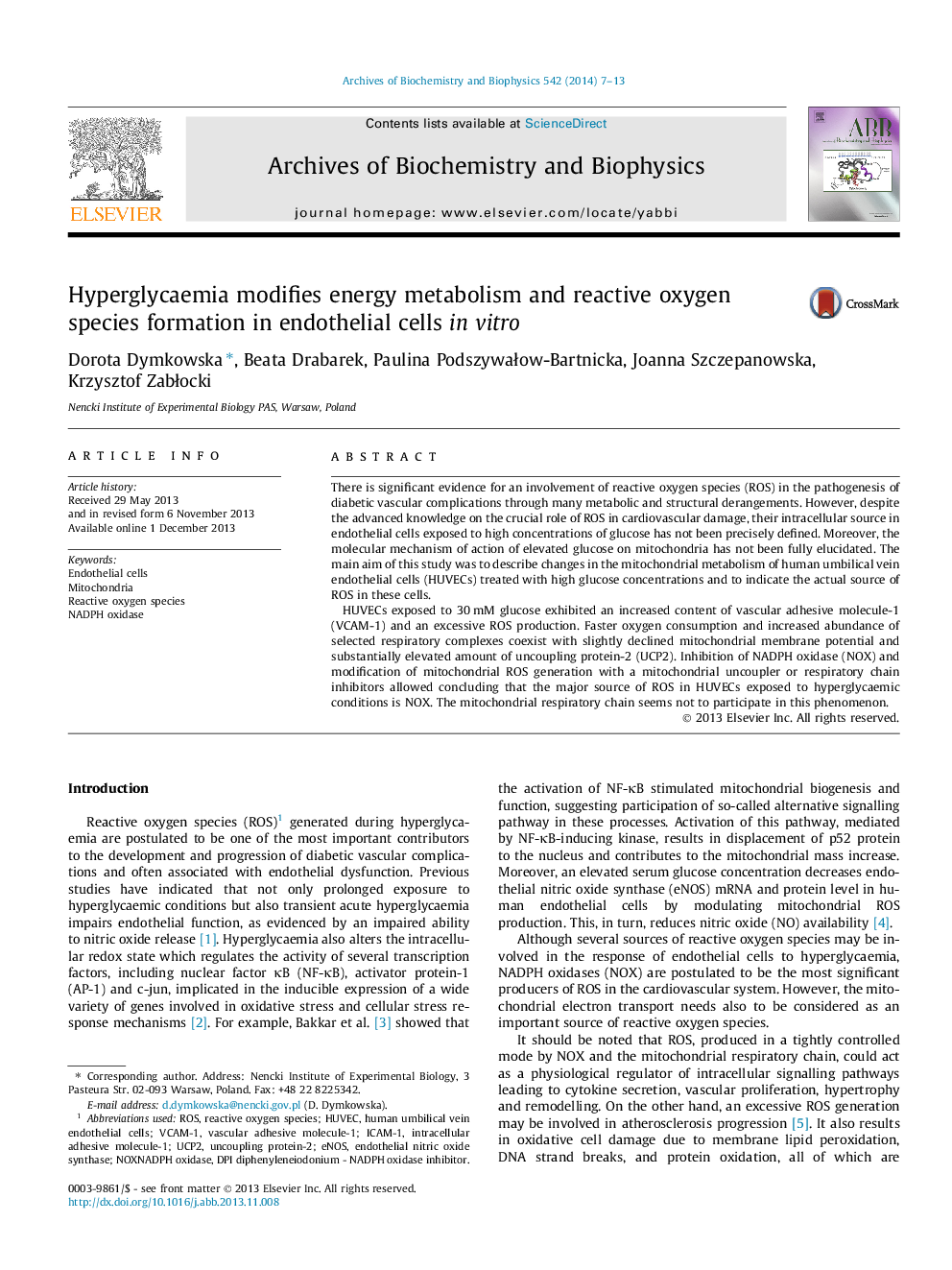| Article ID | Journal | Published Year | Pages | File Type |
|---|---|---|---|---|
| 1925270 | Archives of Biochemistry and Biophysics | 2014 | 7 Pages |
•High glucose-induced ROS formation is due to NADPH oxidase activity in HUVECs.•High glucose affects mitochondrial structure but not mitochondrial mass.•High glucose rises abundance of respiratory complexes and UCP2 in HUVECs.
There is significant evidence for an involvement of reactive oxygen species (ROS) in the pathogenesis of diabetic vascular complications through many metabolic and structural derangements. However, despite the advanced knowledge on the crucial role of ROS in cardiovascular damage, their intracellular source in endothelial cells exposed to high concentrations of glucose has not been precisely defined. Moreover, the molecular mechanism of action of elevated glucose on mitochondria has not been fully elucidated. The main aim of this study was to describe changes in the mitochondrial metabolism of human umbilical vein endothelial cells (HUVECs) treated with high glucose concentrations and to indicate the actual source of ROS in these cells.HUVECs exposed to 30 mM glucose exhibited an increased content of vascular adhesive molecule-1 (VCAM-1) and an excessive ROS production. Faster oxygen consumption and increased abundance of selected respiratory complexes coexist with slightly declined mitochondrial membrane potential and substantially elevated amount of uncoupling protein-2 (UCP2). Inhibition of NADPH oxidase (NOX) and modification of mitochondrial ROS generation with a mitochondrial uncoupler or respiratory chain inhibitors allowed concluding that the major source of ROS in HUVECs exposed to hyperglycaemic conditions is NOX. The mitochondrial respiratory chain seems not to participate in this phenomenon.
